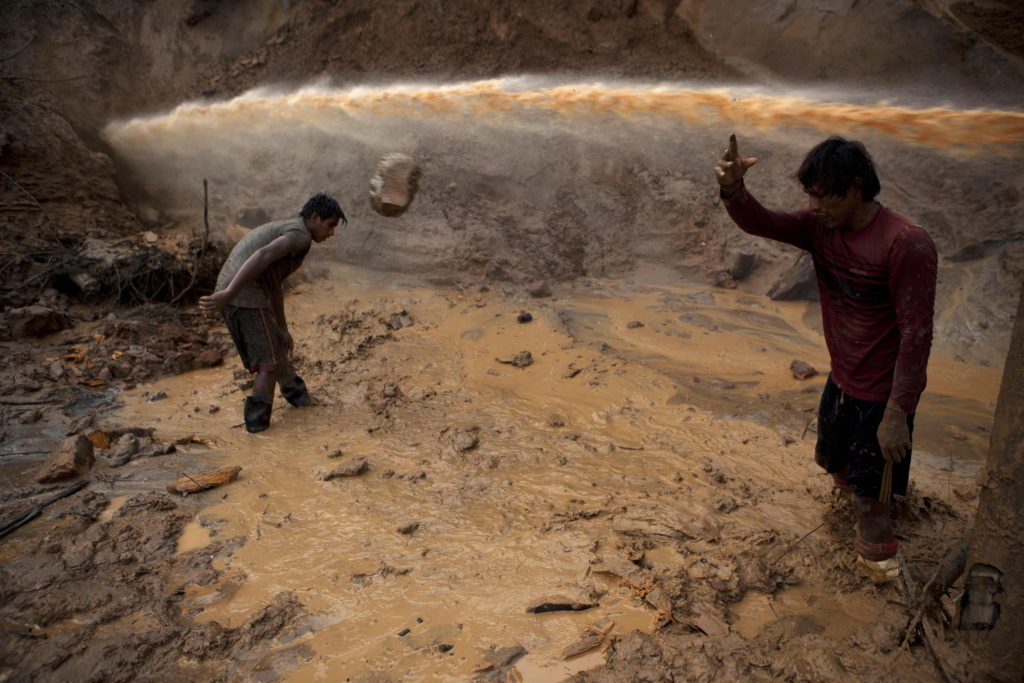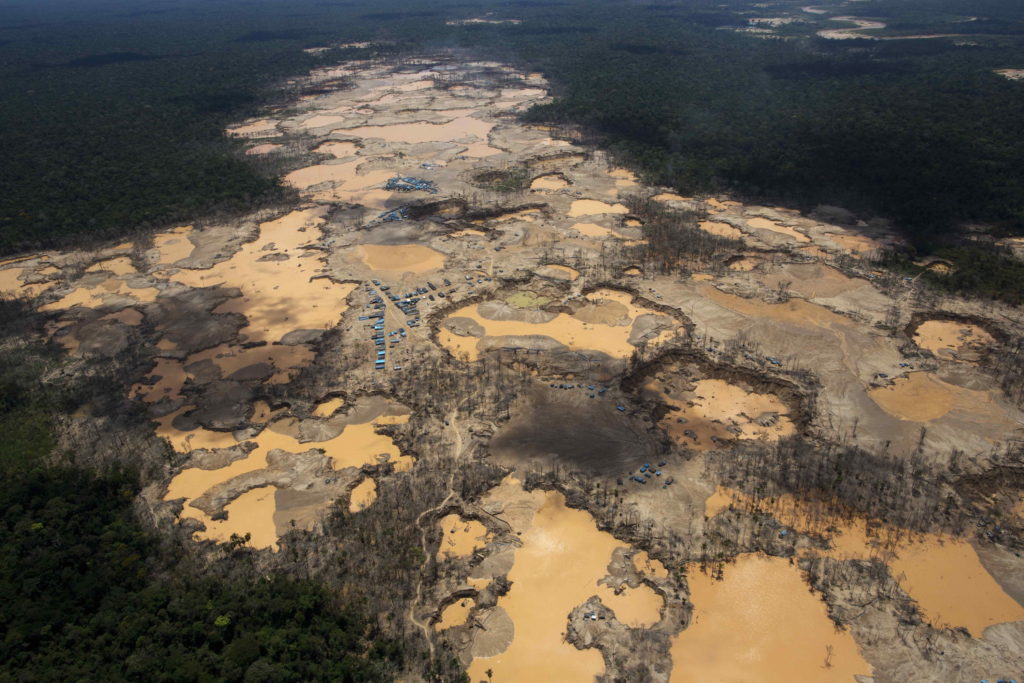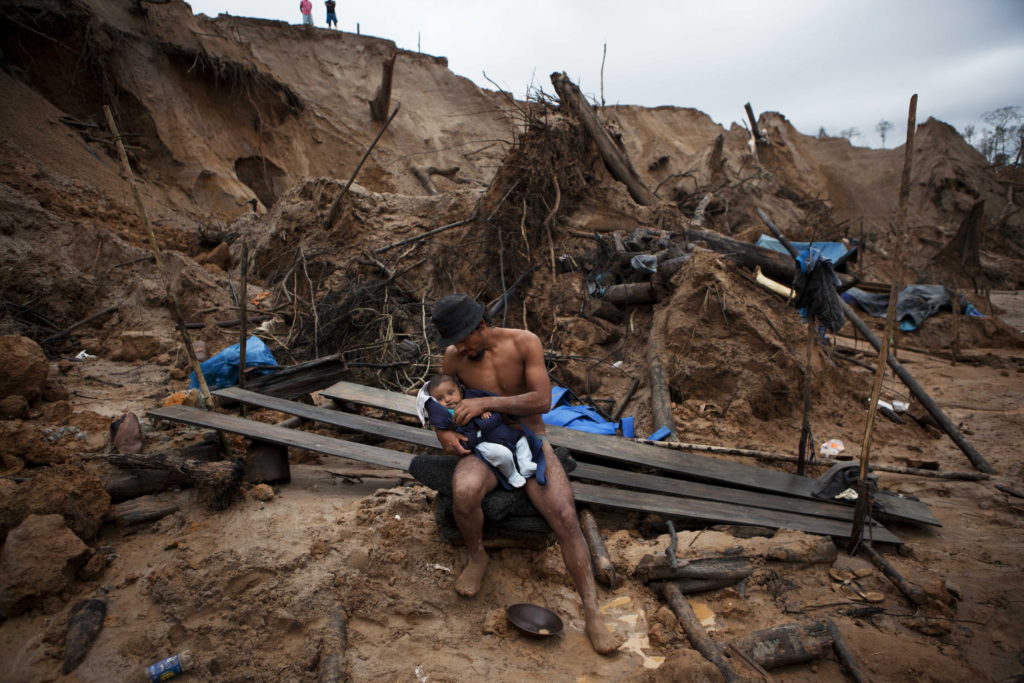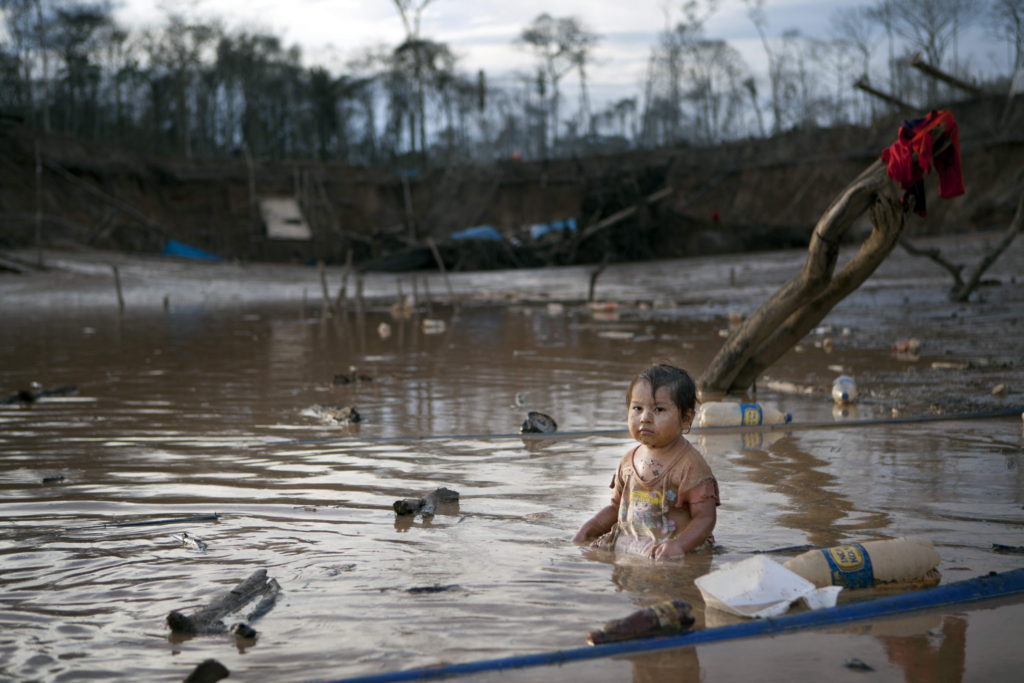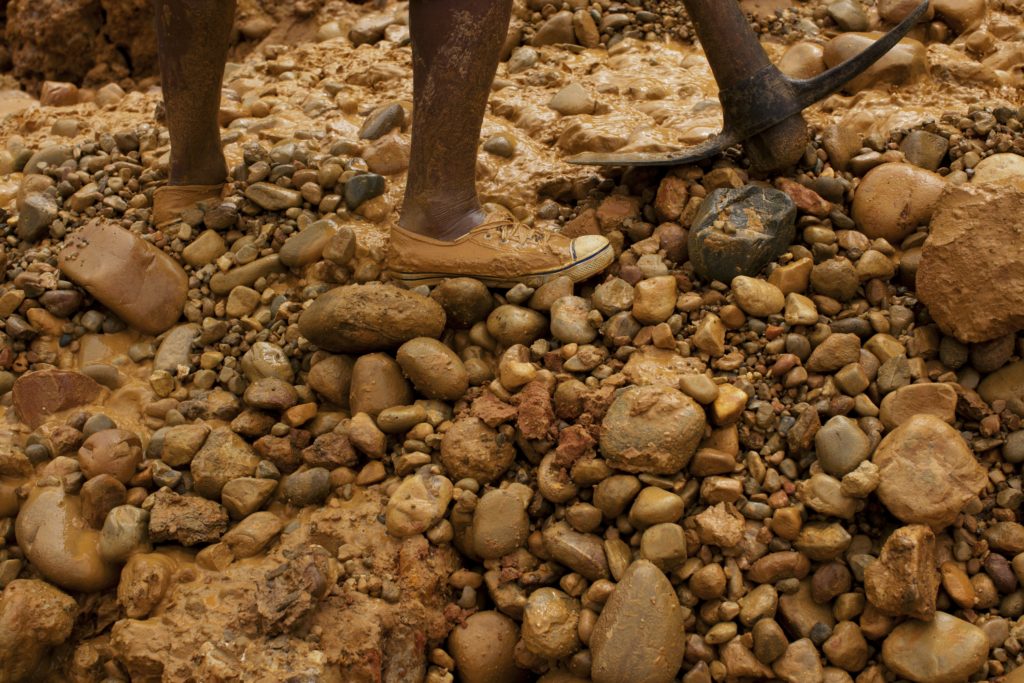Artist’s Statement:
A nationwide ban on illegal mining took effect April 19, 2104 in Peru. Security forces accompanied by prosecutors have blown up backhoes, generators and water pumps in the Huepetuhe district, a mining boomtown dating back to the 1980s that includes two entire streets of brothels and many more of machine shops.
Madre de Dios state has an estimated 40,000 illegal miners, most centered near the commercially vital Interoceanic Highway that links the Pacific Ocean with Brazil. They use tons of mercury to bind the gold flecks they dig up, and have ravaged forests and poisoned rivers in a biodiverse region that is also home to tribes living in voluntary isolation. Before the deadline, the government began sharply reducing gasoline supplies to Madre de Dios, idling mining machinery. Its multi-pronged approach to snuffing out illegal mining has included confiscating illegal gold at domestic airports and dynamiting illegal gold refineries in the coastal cities of Chala and Nazca.
Miners have resisted, clashing with police while intermittently blocking traffic on the Interoceanic Highway in recent weeks. One miner was killed and more than 50 people hurt by shotgun and gunfire during those confrontations. Illegal mining accounts for about 20 percent of Peru’s gold exports, and most miners are poor migrants from the Andean highlands. By cracking down the government is toying with a powder keg, some Peruvians fear. “People are going to go hungry,” said Luis Otzuka, president of Fedemin, which represents the informal miners. “This is a dictatorial, authoritarian government.”
Artist’s Bio:
Rodrigo Abd is an Associated Press staff photographer based in Lima, Peru.

